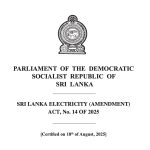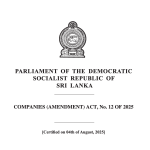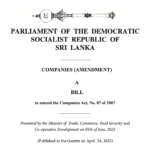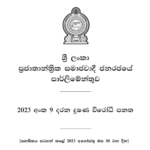The termination of a company’s existence is a structured and legally governed process aimed at ensuring fairness, transparency, and adherence to statutory obligations. This article delves into the various methods by which a company can cease to exist under the Companies Act No. 17 of 1982, detailing the processes of cancellation of registration, removal of name, court-ordered dissolution, and different forms of winding up.
1. Cancellation of Registration
A company’s registration may be canceled if it is determined that the initial grant of registration was unlawful. This measure prevents the continued operation of entities that were improperly or fraudulently established.
2. Removal of Name
The Registrar has the authority to remove the name of a defunct company from the register under Section 373 of the Companies Act. This process is typically applied to companies that have ceased operations and fail to comply with statutory obligations, ensuring that inactive entities do not clutter the official records.
3. Order of Court
In certain cases, a court may order the dissolution of a company. This can occur under Section 261 of the Act, often following a compromise or arrangement with stakeholders. The court’s involvement ensures legal oversight and equitable resolution.
4. Winding Up
Winding up is the most comprehensive method of terminating a company’s existence. It involves the liquidation of assets, settlement of liabilities, and final dissolution. The process can be categorized as follows:
4.1 Compulsory Winding Up
Compulsory winding up is initiated by a court petition, governed by Section 254 of the Act. The court may order winding up under circumstances such as:
- Failure to deliver the statutory report or hold statutory meetings.
- Inactivity for over a year following incorporation.
- Reduction in the number of members below the legally required threshold.
- Inability to pay debts, as defined under Section 256.
- Instances where it is just and equitable to wind up the company, such as fraud or irreparable deadlock.
4.2 Voluntary Winding Up
Voluntary winding up can be initiated by the company itself and is subdivided into:
- Members’ Voluntary Winding Up: Applicable when the company is solvent and a declaration of solvency is made by the directors.
- Creditors’ Voluntary Winding Up: Occurs when the company is insolvent and unable to make a declaration of solvency. Creditors are actively involved in the process.
4.3 Winding Up Under Supervision of Court
Even in voluntary winding up, the court may impose supervision to safeguard the interests of creditors and contributories. This allows the liquidator to operate under judicial oversight.
5. Key Procedures in Winding Up
5.1 Compulsory Winding Up
The petitioning party must follow the Companies Winding Up Rules of 1939. Upon the court’s satisfaction with the petition’s validity, it issues orders to protect stakeholder interests and manage the winding-up process.
5.2 Voluntary Winding Up
- A resolution for voluntary winding up is passed in a general meeting.
- Notification of the resolution is published in the Gazette within 14 days.
- A liquidator is appointed to oversee the process.
- Final accounts are submitted to the Registrar upon completion.
5.3 Creditors’ Voluntary Winding Up
- Creditors are summoned to meetings where the company’s affairs and debts are disclosed.
- Creditors nominate the liquidator and may form a Committee of Inspection.
- The liquidator ensures orderly asset distribution and debt settlement.
6. Role of Liquidators
Liquidators play a pivotal role in managing the winding-up process. They are responsible for:
- Liquidating company assets.
- Settling claims with creditors.
- Preparing and filing necessary reports and accounts. Depending on the type of winding up, the liquidator’s powers and duties may be subject to court supervision or resolutions passed by the company or its creditors.
7. Dissolution
Dissolution signifies the formal conclusion of a company’s existence. The method of dissolution varies based on the type of winding up:
- Compulsory Winding Up: The court orders dissolution after verifying that all affairs have been wound up.
- Members’ or Creditors’ Voluntary Winding Up: The company is deemed dissolved three months after the Registrar records the liquidator’s final account.
- Supervised Winding Up: Dissolution follows court-sanctioned proceedings, ensuring compliance with all legal requirements.
8. Conclusion
The termination of a company’s existence is a meticulously regulated process designed to balance stakeholder interests, maintain legal compliance, and ensure orderly closure. Whether through court intervention, voluntary resolutions, or administrative measures, the cessation of a company underscores the importance of adhering to corporate governance principles throughout its lifecycle.














